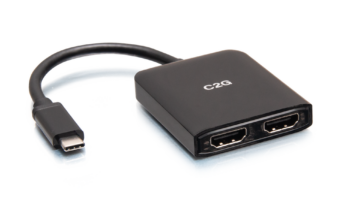Although rear-projection TV systems have suffered from recent high-profile defections, Texas Instruments used International CES to keep its Digital Light Processing (DLP) technology vital by expanding on display applications for video game systems.
The company has previously shown 3-D technologies that, while adaptable to both movies and video games, are expected to particularly appeal to gamers.
At this year’s International CES, TI showcased another technology designed to enhance two-player gaming using the same video display. The system, called Dual View, works like a split-screen mode in a TV to give each player an individual perspective of the action, but this adaptation allows each player an independent full-screen view of the action simultaneously on the same display.
Like most 3-D TV systems, Dual View requires special glasses to be worn to see the effect. The technology also requires special software, which could be applied to video game consoles, a TI spokesman said.
“There are probably three or four different ways this could be implemented,” said Adam Kunzman, TI’s DLP HDTV division business manager, before the show. “What we will be demonstrating is a hardware solution to allow two independent sources to show the capability and then we’ll see what kind of things happen in the console market.”
Currently, the Dual View technology supports only 2-D images, but TI said the system could be expanded down the road to support 3-D images as well.
The system can be applied to all DLP rear-projection TVs currently available from Samsung and Mitsubishi, TI said. The DLP system lends itself well to the technology because DLP offers an ability to switch light quickly.
“For Dual View to work you have to have about a 100,000:1 contrast ratio between the two different sources, otherwise you see a bleed-through,” Kunzman said, explaining why the technology would not be easily adaptable to plasma or LCD displays. “So, for example, if you have a bright scene on one side and a dark scene on the other, if you are unable to switch fast enough, or there is a ghosting time or the glasses don’t have a high-enough contrast ratio, you are going to be able to see the other guy’s game, and it will be a little confusing.”
TI is demonstrating the technology this week, although currently no manufacturer partners are ready to announce plans to market a Dual View product at this time. However, TI said it is talking to potential customers and an announcement could be made later in the year at a gaming-related venue.
In other DLP news at the show, TI joined with Luminus and Samsung to demonstrate LED lighting technology for rear-projection sets with double the brightness of previous LED generations. TI said the advancement will achieve brightness levels of between 500 and 600 lumens.
The advancement is described as resulting from a combination of improvements in the LED system itself, and changes by Samsung in the TV to implement it.
“We expect LED to have a much bigger impact when they are more competitive in brightness going into 2008,” Kunzman said.
Despite the shrinking field of manufacturers, TI said it expects to see a competitive marketplace continue for DLP, particularly in larger screen sizes. The company said DLP continues to be the leading display solution for screen sizes 55 inches and larger. Next on tap: the company is working on a couple of optical solutions that will significantly reduce cabinet depths into the 6- to 7-inch range.












